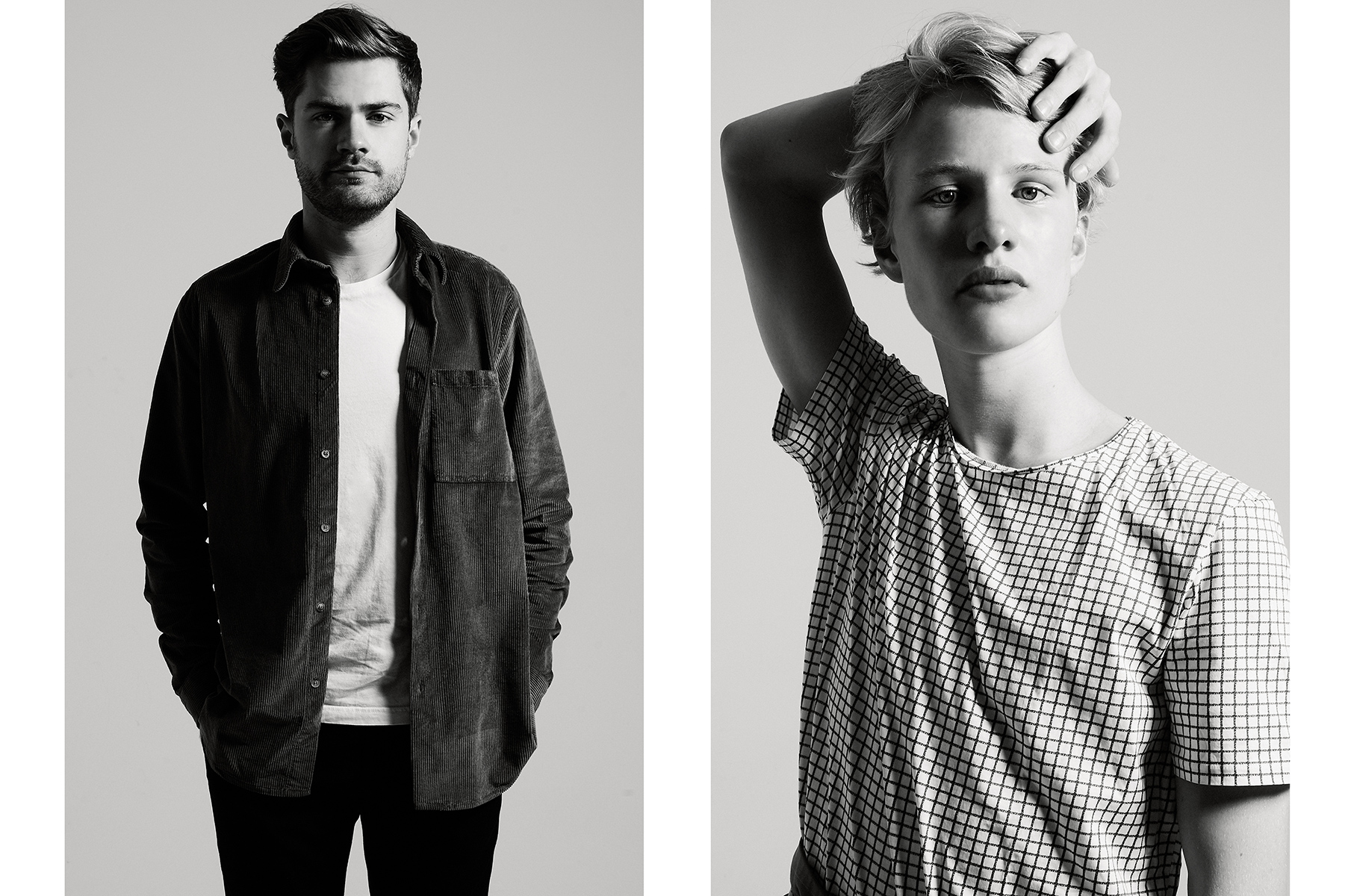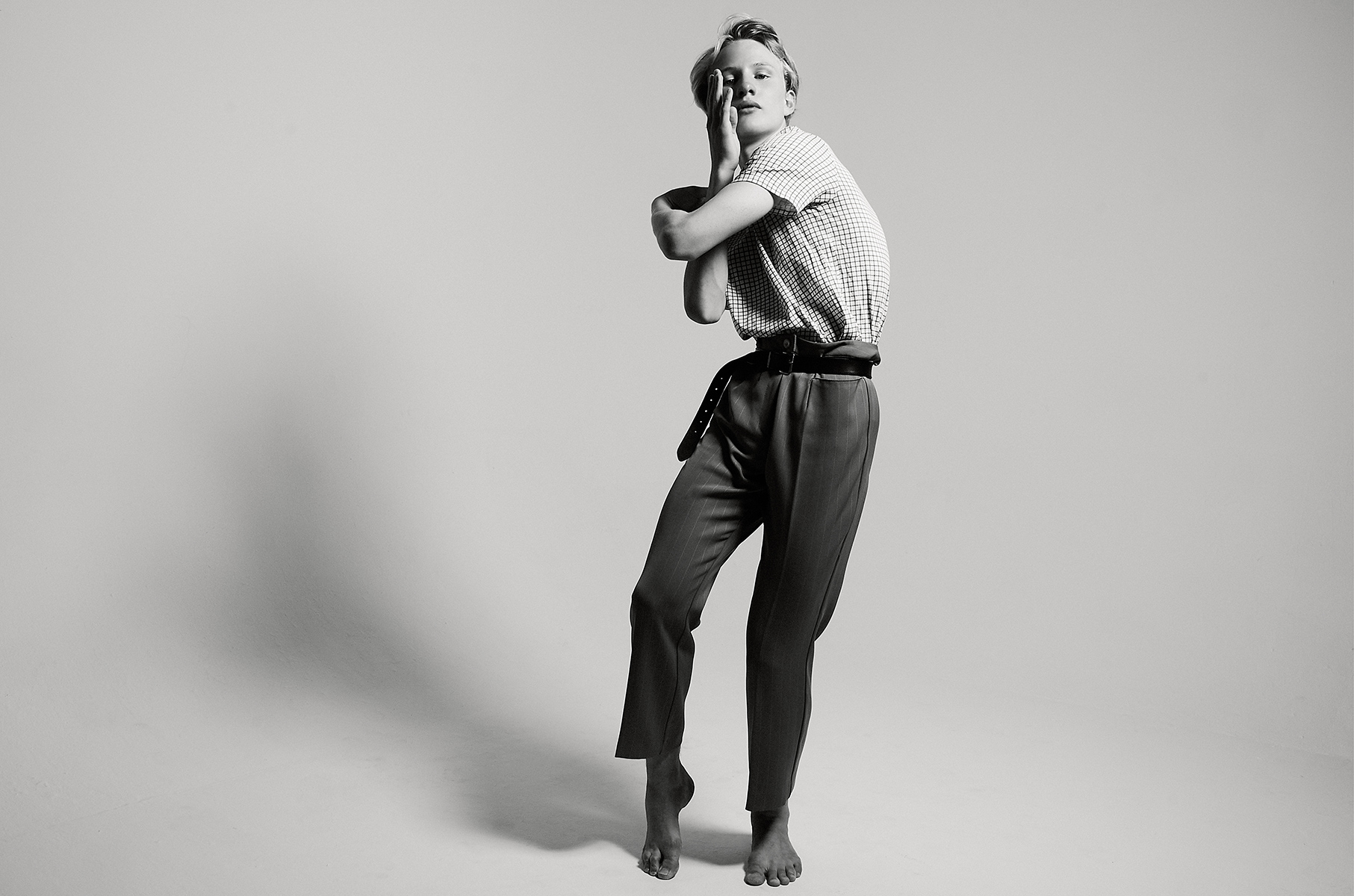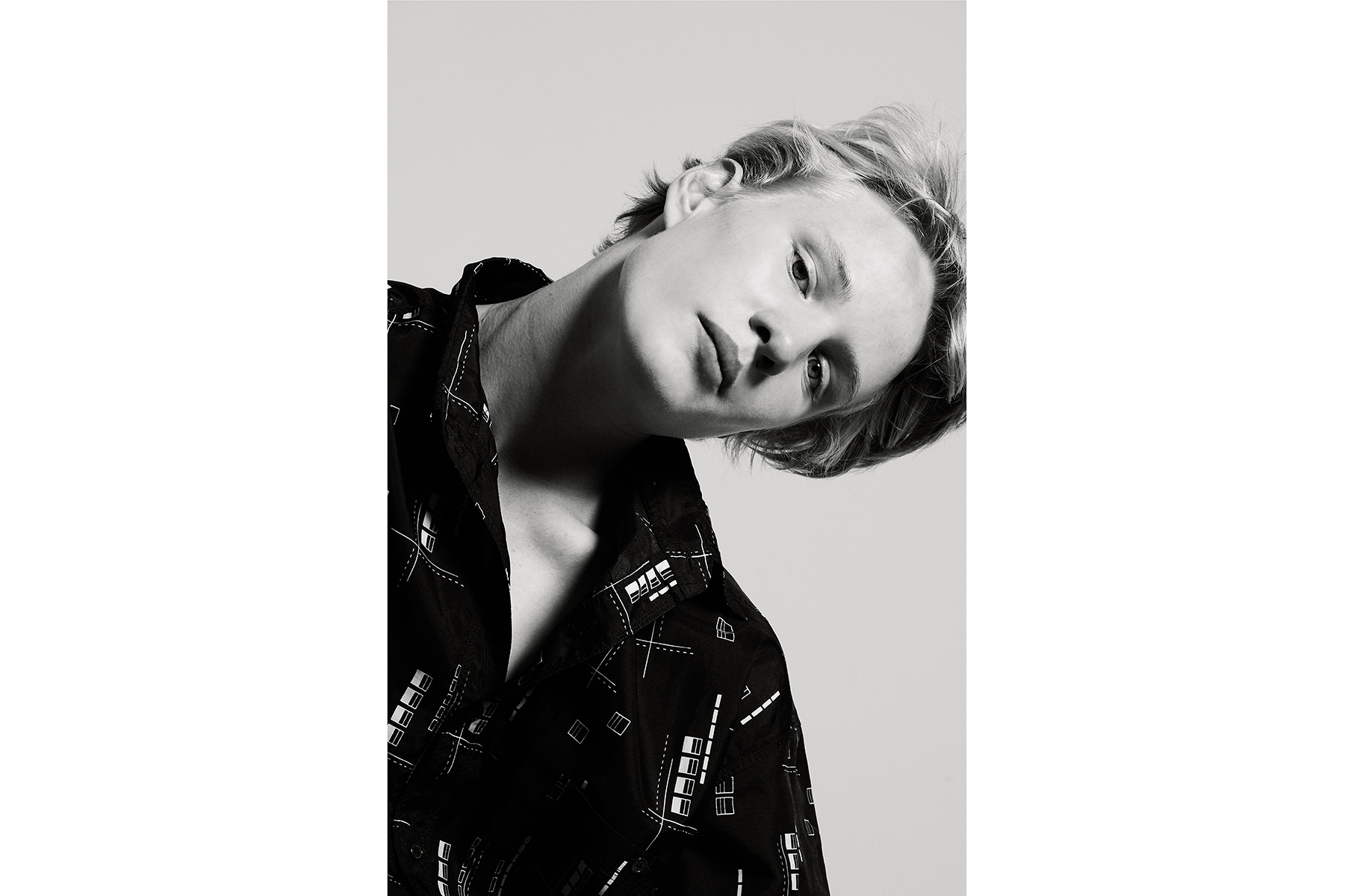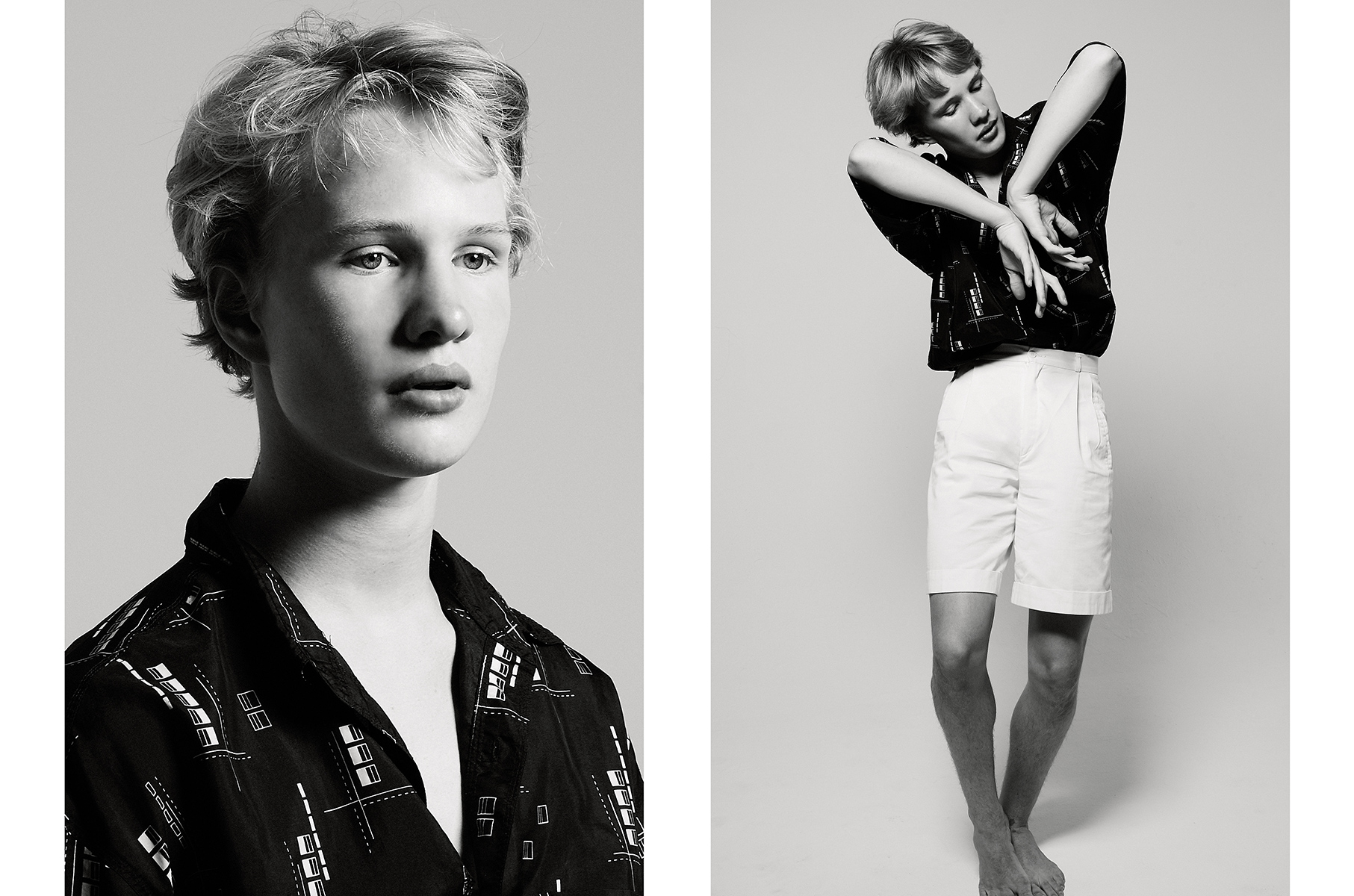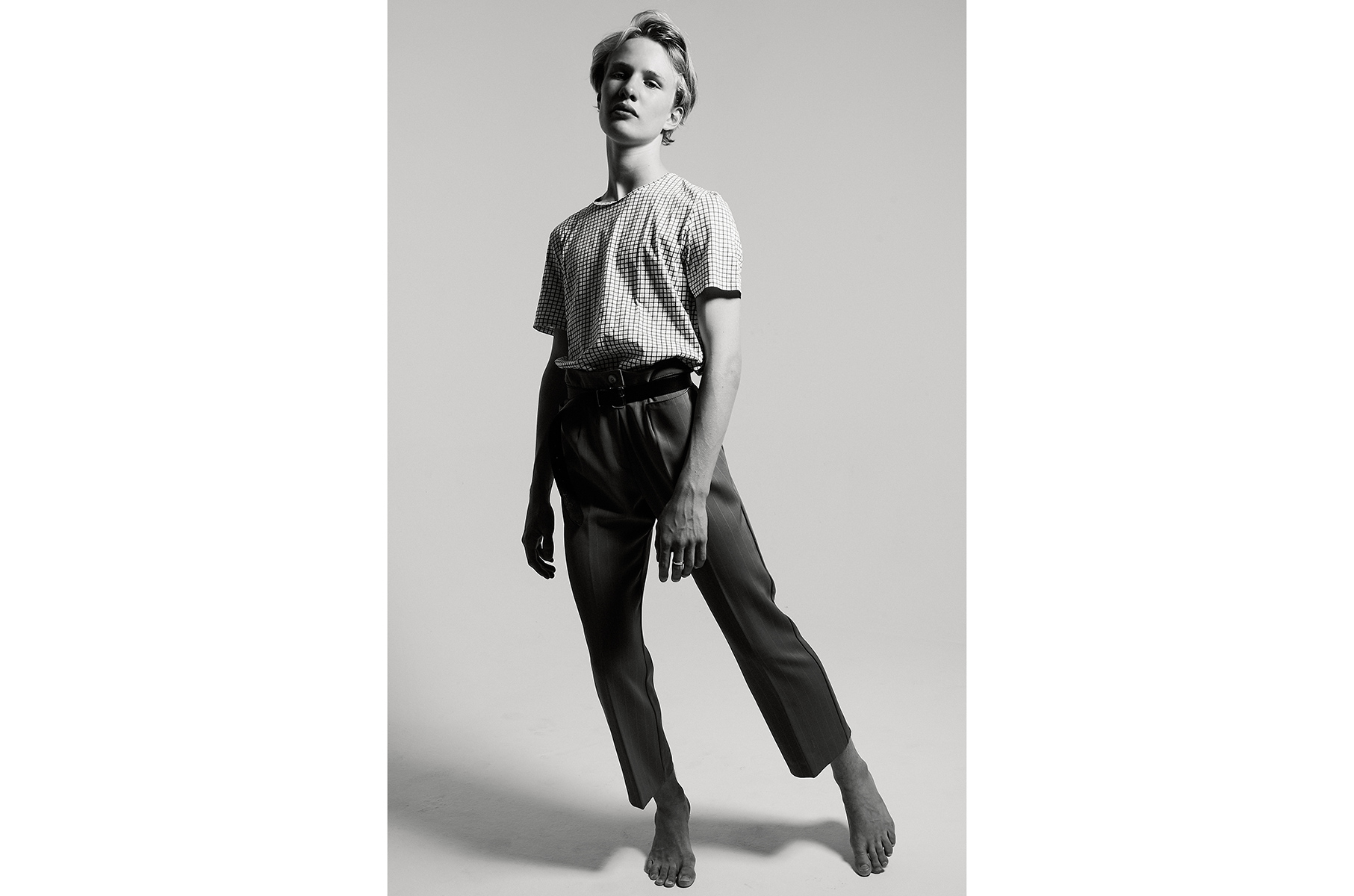Girl
Victor Polster x Lukas Dhont
Images by Jan-Willem Dikkers
“She was a personal example of really being yourself, and at the time
I wasn't ‘out of the closet’ yet, so for me it was still
very difficult to choose myself. She helped me overcome that,
and I helped her, in a way, by giving her this film.”
— Lukas Dhont
Girl
Written by Lukas Dhont and Angelo Tijssens, Girl is a 2018 Belgian drama film directed by Dhont. It follows the teenaged Lara as she studies at a prestigious Belgian dance academy and prepares for sex reassignment surgery. The film screened in the Un Certain Regard section at the 2018 Cannes Film Festival, where it won the Caméra d’Or award for best first feature film, as well as the Queer Palm—an independently sponsored prize for selected LGBT-relevant films entered into the Cannes Film Festival.
Lukas Dhont
Award-winning Belgian director and writer Lukas Dhont is known for his first feature, Girl (2018), as well as his previous short films Headlong (2012) and L’Infini (2014), all of which explore issues of gender or sexuality.
Victor Polster
A trained ballet dancer, sixteen-year-old Victor Polster won the Un Certain Regard: Best Actor award at Cannes film festival for his first acting role, portraying Lara in Lukas Dhont’s Girl (2018).
Director Lukas Dhont’s debut feature film, Girl, is more than just a trans story. It’s a story of identity, growing up and the courageous steps required to become who you are meant to be. The Belgian film follows Lara, a fifteen-year-old girl born in a boy’s body who is committed to becoming a professional ballerina. Despite being accepted into a prestigious dance academy and the support of those around her, most notably her father, Lara continues to struggle with what she sees in the mirror. Desperate to speed up the gender reassignment process while perfecting her dance technique, Lara pushes her body to its limits.
Girl won both the Caméra d’Or award for best first feature film and the Queer Palm at the Cannes Film Festival. It is also Belgium’s official 2018 Academy Awards entry for Best Foreign Language Film. Victor Polster, the young Belgian actor who delivers a breathtaking performance as Lara, won the Un Certain Regard Jury Award for Best Performance in his first acting role.
Polster and director Dhont discuss how they each prepared for the making of Girl and the impact the film has had on viewers, themselves and the trans community.



Victor Polster: What did you have in mind when you made the film?
Lukas Dhont: The idea for this film started in 2009 when I was eighteen years old. I had just finished at a very Catholic high school and was going to start film school. I read an article in a Flemish newspaper about a young fifteen-year-old trans girl, Nora Monsecour, who was in the ballet school in Antwerp and wanted to change classes from the boys class to the girls class but wasn’t allowed. Her dream was to become a ballerina, and I immediately was very attracted to her story because for me she was an example of someone who chose the true version of herself at a very young age and was very honest with that and very ambitious at the same time.
During my Catholic high school time, I had been trying to deny a part of myself, more specifically my sexuality, to fit into the group. And so to read about the fifteen-year-old that actually did the opposite was very attractive to me. So I contacted her because I wanted to shoot a documentary about her. We met each other, but she didn’t want to do the documentary because her school situation was very difficult at the time. Also, she didn’t want to be filmed because she was transitioning and didn’t feel comfortable with her body being on screen. But she did agree to meet with me more.
She was a personal example of really being yourself, and at the time I wasn’t “out of the closet” yet, so for me it was still very difficult to choose myself. She helped me overcome that, and I helped her, in a way, by giving her this film. She agreed to start writing a script with me for a fiction film, which for her was a way to let go of part of her past and to deal with what was happening. From that moment on, we started writing the script for a fiction film that eventually became Girl.
Very early on we decided to not really put the focus on the outside world or on negative reactions of the outside world. We didn’t want a character that had to fight everyone. We wanted to really be able to focus on the character and her struggles.
What was so powerful to me in the original story was the world of the ballet, symbolizing a very binary, gender-specific world in which this trans character wants to participate. I thought that made for a great metaphor of the bigger picture, a society that is very binary even if it’s changing a little bit.
How did I meet you?
“The strength she has already at the age of fifteen, knowing that you’re in a body that does not feel like your own and that you must change it. It really fascinated me and made me want to represent this character.”
— Victor Polster
Sidi Larbi Cherkaoui
Sidi Larbi Cherkaoui (b.1976) is a Belgian-Moroccan dancer and choreographer. He has made over fifty choreographic pieces and has received two Laurence Olivier Awards for Best New Dance Production, three Ballet Tanz awards for best choreographer (2008, 2011, 2017) and the KAIROS Prize (2009).
VP: I imagine you contacted the school to audition some dancers, and they got in touch with me. The only information they gave was that it was the role of someone in a dance class and that we would work with the choreographer Sidi Larbi Cherkaoui, which as a dancer was very interesting to me. I decided to do the audition with several other people from my class, and I met you there for the first time.
After that, you contacted me and offered me an audition for a more important role in the film, without telling me it was the lead. At that point I still didn’t know what the film was about. You sent me certain excerpts from the script, and I decided to audition for the lead role.
The audition wasn’t at all stressful. It was at your place with Arieh Worthalter, the actor who plays the father. Since I had never done a film, I was afraid it would be this thing with lots of cameras and other kids waiting their turn. But it wasn’t that at all. Right away we put something together so that the relationship between Lara and her father would really be there.
LD: What attracted you most to the part?
VP: What attracted me and my parents the most when I read the script was the family, essentially the relationship between Lara and her father and her little brother, and especially the strength of her character. The strength she has already at the age of fifteen, knowing that you’re in a body that does not feel like your own and that you must change it. It really fascinated me and made me want to represent this character.
What also really impressed me and my parents was that the relationship with the father was so beautiful and that the film was concentrated on this character who doesn’t feel good about herself. It’s concentrated on her and not on a negative environment.
Nora Monsecour
The primary inspiration for the character of Lara in Girl, Nora Monsecour is a teenage transgender ballet dancer. She started dancing at the age of four, training professionally in ballet when she was nine. She graduated in contemporary dance at MUDA (the Institute for Dance and Drama) in Belgium, before entering the Northern School of Contemporary Dance, Leeds in 2015.
LD: Tell me about your first encounter with Nora Monsecour.
VP: My first encounter with Nora was during the dance class rehearsal. I remember she came before they started shooting, and I didn’t know who she was at first. I met her, and she started coming more often, which was important for me because even though she didn’t give any instructions, her presence was reassuring. I wanted mostly for her to believe in the film. I wanted to create a somewhat special relationship with her because she was one of the biggest inspirations I had for the film.
How did you prepare yourself for the film?
LD: Because I wrote and directed this film, a big part of the preparation happened while I was writing it. I actively worked on it for four years, which is quite a long time, and in that time I did several things to really make this story as complex as it could be on every single layer.
Jan Martens
Jan Martens (b.1984) is a Belgian choreographer. He studied dance at the Royal Conservatoire of Dance at Artesis Hogeschool in Antwerp and at the Fontys Dance Academy in Tilburg. Since 2009 Jan Martens has been creating his own pieces, focusing on contemporary social topics with humor and a talent for gentle controversy. In 2014, together with business leader Klaartje Oerlemans, he founded the production platform GRIP in Antwerp/Rotterdam to organize and distribute his work. From September 2014 to June 2016, Martens was artist-in-residence at tanzhaus nrw, a performing arts centre in Düsseldorf, and is creative associate at deSingel International Arts Campus in Antwerp until 2021.
First of all, the dance aspect because this film obviously takes place in a classical dance school. I worked closely with a modern choreographer, Jan Martens, who I followed during three years in his making process.I filmed a lot of his spectacles and rehearsals because I wanted to work out how I would film the dance scenes. Dance is not an easy thing to put on screen because it’s about physicality, it’s about bodies. To portray that and make it resonate with an audience in a cinema, you really have to make them feel it. For three years I really worked on that, on getting to know the dancing better and trying to put myself completely in there.
Also, when Sidi Larbi Cherkaoui came on board for this film—he’s done films like Anna Karenina by Joe Wright and music videos for Beyoncé. I felt that with him I had a big inspiration I could hang on to, and that would make me dive completely into this classical area. I’m still very thankful for it because he gave me the preparation I needed to really know how I would put ballet on screen.
Berdache Belgium
Berdache Belgium is an association formed to support parents with a transgender child. Run by parents of trans children, the association offers information and advice as well as raising awareness and working with government bodies to effect change.
Next to that, I was concerned with the trans aspect, of course. Nora was the biggest inspiration, but also her parents who were very loving and accepting. They have a support group for parents of young trans people which is called Berdache Belgium, which I followed closely during the years of writing and through which I met a lot of parents and young trans kids.
Very early on I found out that every trans experience is very different. There were a lot of people like Nora, but also a lot of people that didn’t have the same experience as Nora. With this film I could really only re-transmit one experience, and I wanted it to be Nora’s.
We also worked very closely with the gender team of a hospital in Ghent. It is one of the two biggest centres in Europe when it comes to treatment medically and psychologically of trans people. I met with a lot of psychologists. I met with a lot of gender specialists that write about gender, transgender and the way gender is perceived in our society. All these little elements really made the script as complex as I could make it.
Then came the direction, because you had never acted before and neither had the little brother in the film. Actually, I had only one actor that had really acted before. The difficulty was, “How do I get these young people to really stay themselves, to be very free when a camera is put on them and forty people are looking at them?”
“I met with a lot of psychologists. I met with a lot of gender specialists that write about gender, transgender, and the way gender is perceived in our society. All these little elements really made the script as complex as I could make it.”
— Lukas Dhont
What we did was during the three months before the shoot, you, me, Oliver Bodart (who played the younger brother Milo) and Arieh Worthalter (who played Mathias, Lara’s father) did a lot of things together as a family. We went bowling, we went to restaurants, we went to movies, and it created this intimacy and confidence between us that was unbreakable once we started shooting. Even if we had twenty or twenty-five other people around us, we were like this core. I think you felt so free and had gained so much confidence that you were able to really be yourself on set and at the same time act and not feel like you would do something badly. I know believability as the character of Lara was your biggest stress.
I tried to give all the actors freedom to do what they wanted. Then I was just there to push you guys through the performances you gave. That was the biggest preparation. What was your biggest preparation?
VP: One of my biggest preparations was learning to dance on toe shoes. For me, being able to dance as a girl was the most important aspect. I only had three months to prepare for the film, so we did as much as possible, and at the end of my classes everyday I took extra toe classes so I wouldn’t injure myself. I was afraid of injuring myself and not being able to dance afterwards.
Also, what we did with the family. Arieh and Oliver often came to my house to cook and have breakfast together. It was really important that we had that bond.
Also, my times together with Nora during rehearsals and dance scenes, which were a little less stressful because I know dancing better than acting. We filmed the dance scenes first, in six days, and Nora was there almost every day. During the breaks I spoke to her, so there was really a relationship that grew between the two of us. That gave me the confidence to act and to be less afraid of being credible as Lara. And then to be able to let myself go, like you said, because I knew there were emotions in the film that I hadn’t experienced.
LD: How was your work with Arieh Worthalter?
VP: My work with Arieh went very naturally, right from the very first day when I did the audition. We cooked, and we tried to see if there was already a father-daughter relationship. Each time we took it further, so that at the end he was really like my own father because I saw him every day, which was necessary for the film. It was something real because the relationship I had with him during filming is still there.
LD: Did you get a lot of reactions through Instagram and Facebook from young trans people?
VP: There were a few when the film came out from people who were transgender, and they were all positive. I was super happy because it was, of course, an audience I wanted to reach, and I was afraid I wouldn’t be credible. I was so happy and proud that these people had been touched. I also had messages and reactions from young people who are sixteen years old like me, and so I was super proud that they were touched. You?
“Very early on we decided to not really put the focus on the outside world or on negative reactions of the outside world. We wanted to really be able to focus on the character and her struggles.”
— Lukas Dhont
LD: We did a big tour of film premieres in France, Belgium and the Netherlands. We also were here in Telluride, Colorado, which is when I met a young person like you, fifteen years old, who came to watch the film. She was shaking after she saw it because it really touched her core and struck a chord. I’m still in touch with her. I think the film awoke something in her that she had tried to hide for a long time.
We’ve had young people come to watch it who are really emotional, who feel like there is someone put on screen that they really had to see. Lara is a tough character. She’s not the easiest character, but they really are moved by seeing this character on screen.
Can you tell me about May 12, our premiere, and the reaction after that? Not only from the audience but also between us, with Nora and you there
VP: In Cannes? It was the world premiere of the film, and I think everyone was a little stressed to see what people would think. I know I was. And then everything went really well—even better than well—because at the end the whole audience was on their feet. It was a relief to see that people were touched by the film. Almost the whole team was there, so it was really a magic moment because we could see what we had done over several months finally on the screen in front of a real audience.
I was super happy that Nora was also at Cannes because I think she was touched too. At the end of the film when I went to see her, she simply said, “Thank you.” That was all she said, but it was a magical moment and one of the most beautiful compliments I received because for me it was important that she be touched by the film.
LD: What was your favorite moment since Cannes?
VP: A moment I really loved was when the other dancers saw the film because there were many people from my class, and I was stressed about that. That was a very beautiful moment, and there were lots of others. Each time there’s a screening, I’m still nervous to see if people will like it, and it’s still unbelievable how it touches people.

